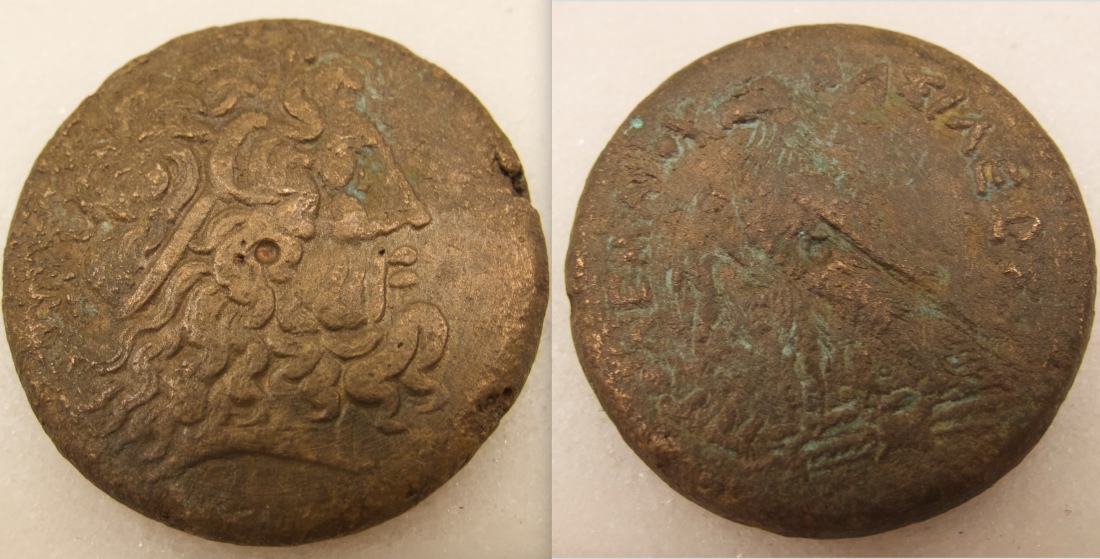Well, it depends on what you mean by ancient. If you were wondering, for example, why Tutankhamun’s tomb didn’t contain a bunch of gold coins mixed in with all the other treasures, it’s because Egyptian civilization is just too old. The Dynastic Period started some time around 3100 BC. Tutankhamun reigned relatively late in the game, in the 18th Dynasty from 1332-1323 BC. Coins, in the other hand, weren’t developed until a little before 600 BC. At this point Egypt’s economy had been developed for thousands of years, and it would take a little while for the practice of coinage to spread to Egypt.

Bronze Diobol of Ptolemy III, 246-221 BC. Obverse: Zeus Ammon with ram’s horns Reverse: Eagle and inscription “ΠTOΛEMAIOY BAΣIΛEΩΣ” (Ptolemy Basileus)
Ancient Egypt’s economy was largely agricultural, with taxes being gathered in the form of crops and forced labor. Most communities would have been self-sufficient, with little need for coinage to trade with the outside world. What external trade did take place was probably on a barter system. Land and wealth were considered to be the property of the gods, and their earthly manifestation, the Pharaoh, so there was little impetus to produce domestic coinage to make economic transactions easier for ordinary people.
Ancient Egypt was quite wealthy in gold, as demonstrated by the elaborate funerary artifacts for which is was legendary. Much of the gold would have originated in mines of Nubia. Nubia had longstanding trade ties with Egypt and eventually fell under direct control after the conquest by Thutmose I around 1500 BC. (He was an earlier ruler in the 18th Dynasty, which also produced Pharaohs Akhenaten and Tutankhamun.) Oddly, ancient Egypt had relatively little access to sources of silver, and the gold to silver price ratio was estimated at 3:1, compared to approximately 10:1 in much of the ancient world. The relative scarcity of silver would also have discouraged the early adoption of coinage.
As the Greek influence on Egypt increased in the Late Dynastic Period, Egypt did eventually begin to produce its own coinage, possibly inspired by the need for coins to pay the wages of Greek mercenaries. Under the Ptolemaic Kingdom (305-30 BC), Egypt produced its own coinage in large quantities, much of which was made of bronze due to the shortage of domestic silver. (See image of bronze diobol of Ptolemy II above for an example.) With the defeat of Mark Antony, Egypt fell under Roman rule and produced a wide variety of coinage. Egypt then briefly fell to the Persians in 619 AD, and then to the Arab Muslims in a campaign from 639-646 AD. After this, Egyptian coinage would resemble that of the rest of the Muslim world. With the fall of the Ottoman Empire in World War I, modern Egypt issued its own distinctive coins, some of which go full circle by incorporating images from its ancient history, including the Sphinx and the Pyramids.